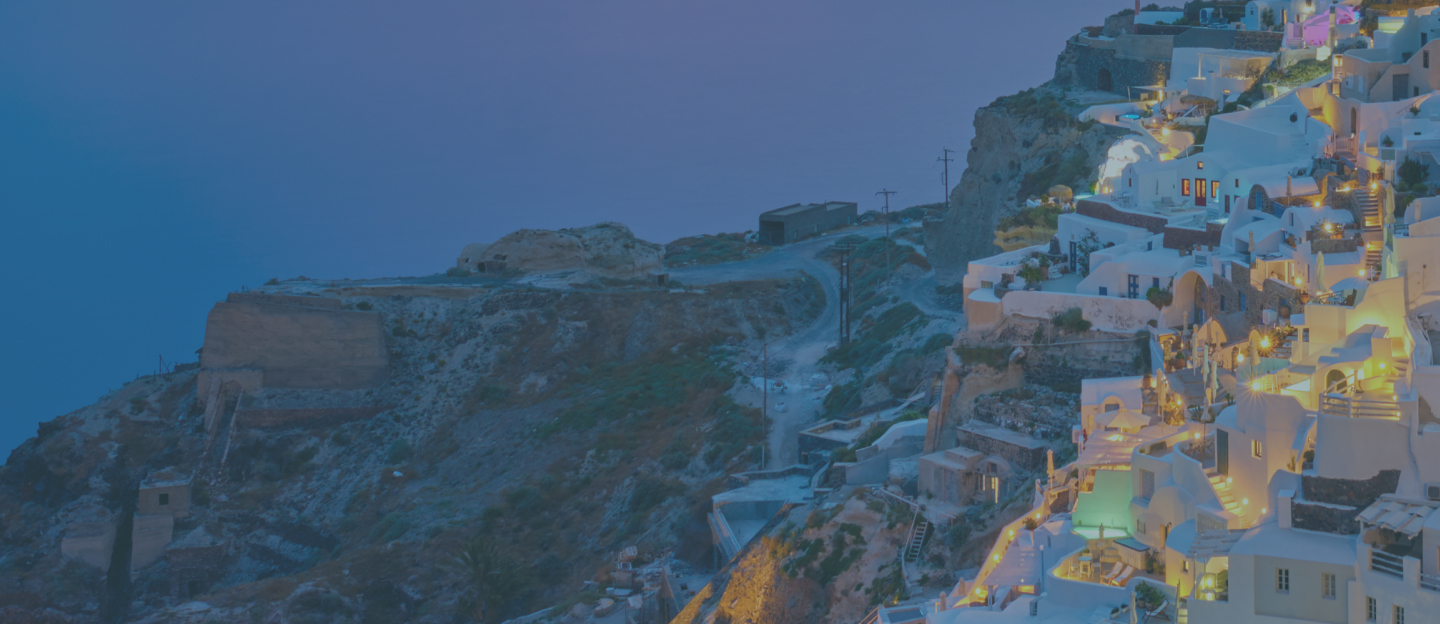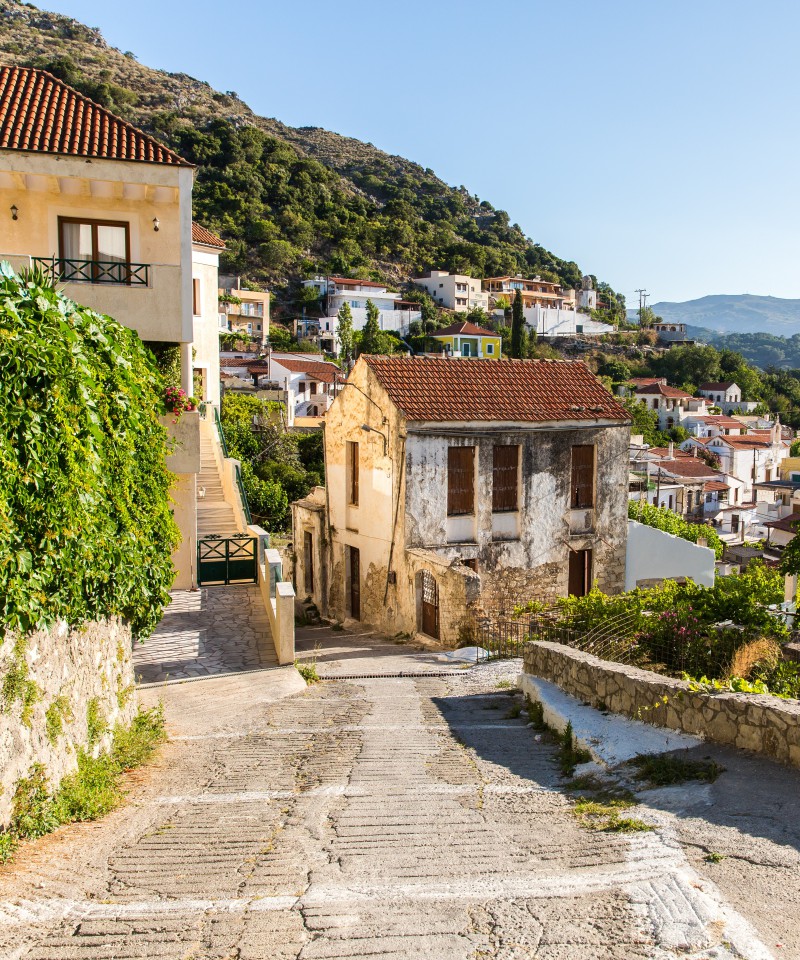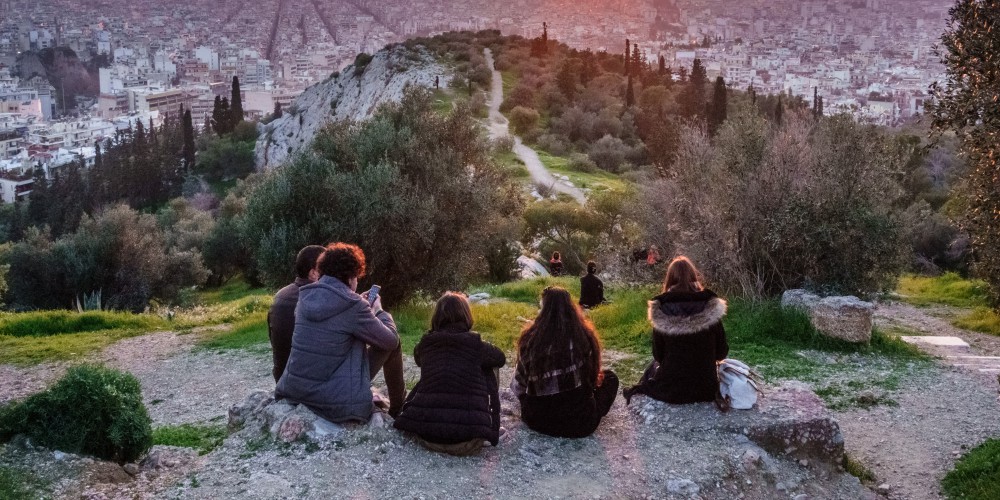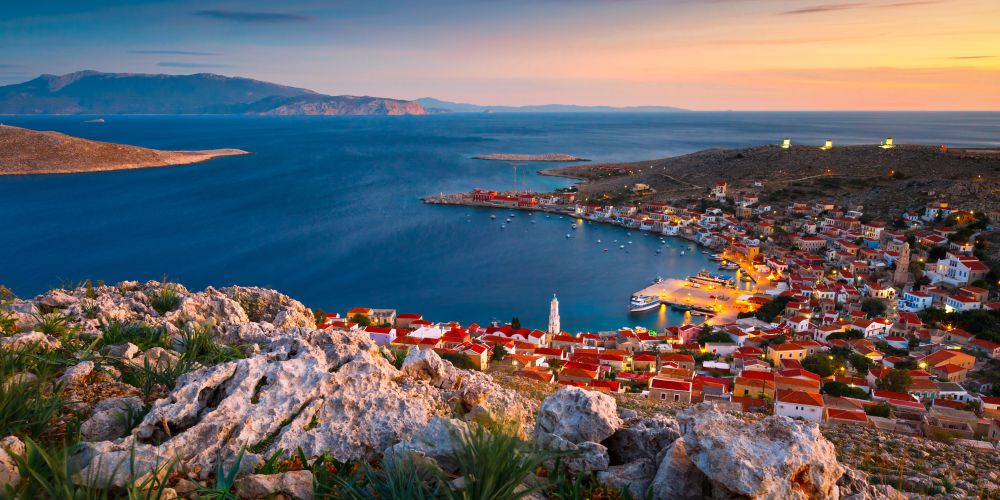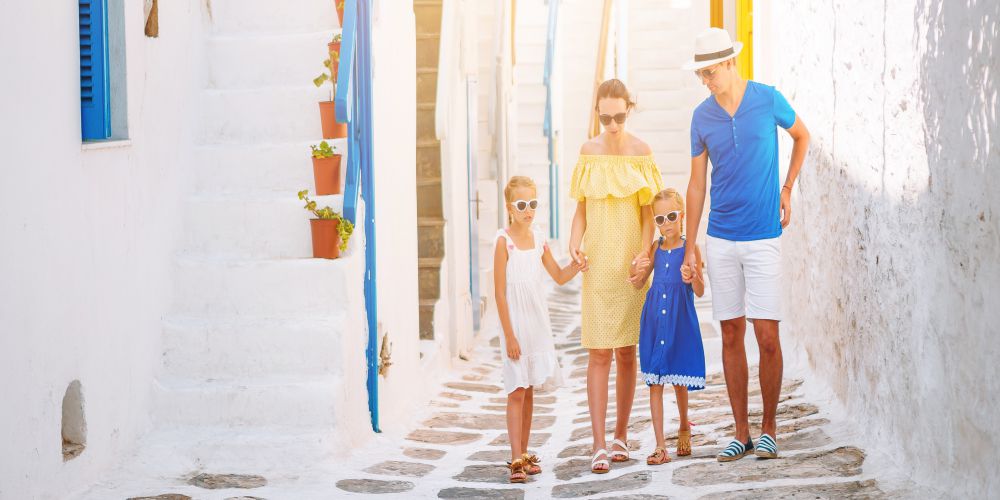
Greece Off-The-Beaten-Path: The Most Authentic Greek Locations!
Key Takeaways
- Greece off-the-beaten-path locations allow you to discover traditional villages, ancient ruins, and local customs that are deeply rooted in Greek history.
- You can go hiking, biking, kayaking, or explore nature reserves to enjoy Greece's natural wonders in a more active and adventurous way.
- Traveling to lesser-known Greek locations increases your chances of interacting with locals and experiencing their warm hospitality.
- One of the highlights of traveling off the beaten path in Greece is the opportunity to savor authentic Greek cuisine. Local taverns and family-run restaurants serve traditional dishes prepared with fresh, locally sourced ingredients.
Everyone craves to escape to Greece for their dream holidays, and more often than not, the mental image one paints upon hearing the word ‘Greece’ consists of magical beaches, whitewashed houses, cobbled pathways, and eternal sunshine, and they’re not wrong.
However, you can find this and many more in destinations that often get overlooked by the common visitor. Mykonos and Sanotiri are awesome, don’t get me wrong, but in my humble opinion, there are many other places that are just as good but not nearly as appreciated.
Here are some off-the-beaten-path places to visit in Greece if you’re after seeing other fish in the sea - pun very much intended!
Pelion
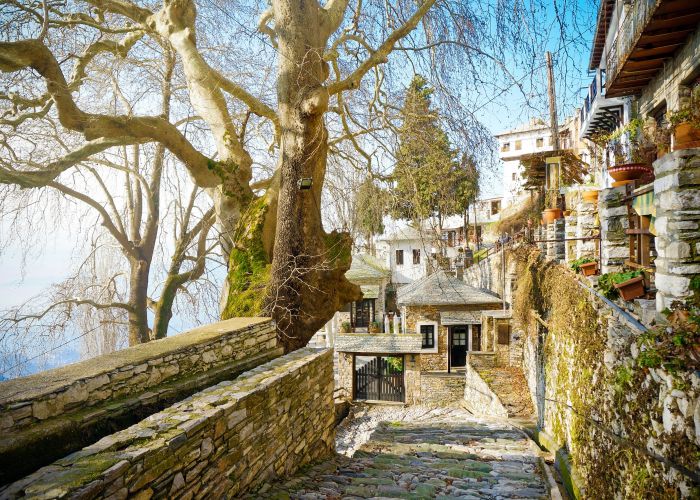
Makrinitsa village in Pelion - credits: SIAATH/Shutterstock.com
Starting out strong with the Greek mainland, as it is, in general, one of the most neglected regions of Greece, I introduce you to Pelion, a destination that is equally appropriate for both summer and winter if mountain beauty is what you’re after.
Located in central Greece, it is a peninsula surrounded by the Aegean Sea from one side and the Pagasetic Gulf from the other and combines mountain with sea, having at its coast some of the most gorgeous beaches with crystal-clear deep blue waters, while its central part hosts impeccable traditional villages with luscious vegetation and an old-time charm no one can resist.
The most famous and worldly-wise village of Pelion is Portaria, found at the foot of the mountain, which is blessed with out-of-this-world beaches and a fantastic ski resort; did someone say diverse?
Portaria’s town seems like it has come straight out of a fairytale, with its traditional stone houses and its scenic alleys full of cozy cafes and local taverns stealing the hearts of its visitors.
On the eastern slopes of Mount Pelion lies the unique village of Zagora, which is made of four different districts that all meet in the square of Ag. Georgios. On this square, you can find the rich Public Library of the region, and nearby you can find the Drakopoulou Mansion, home to the Women’s Agrotourism Cooperative of Zagora.
The most impressive part of Zagora, however, is its striking wild nature that decorates every single corner and its delectable cuisine with traditional dishes that have been handed down from older generations.
Other striking villages include Tsagkarada, Vyzitsa, and Milies, the starting point of the emblematic steam train of Pelion, Makrinitsa, and Pinakates, each unique in its own way but all worth a visit during your stay. There is no arguing that Pelion is a feast for the eyes!
Ikaria island
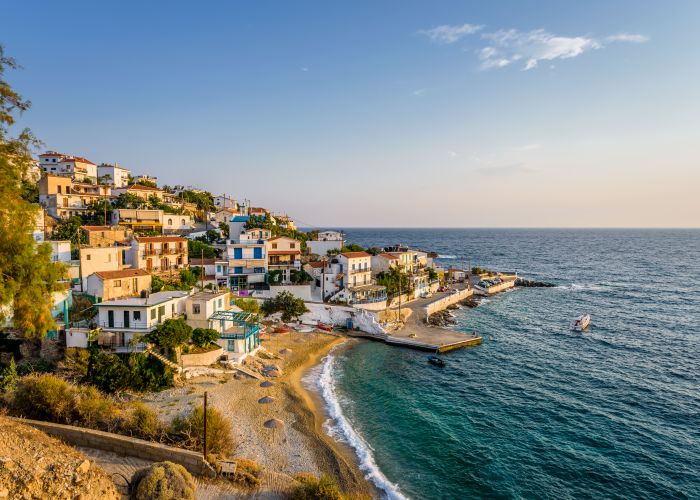
Armenistis, Ikaria - credits: Tom Jastram/Shutterstock.com
An utterly beloved Greek island, Ikaria is one of those Greek destinations all the locals talk about, but none of the foreigners visit. Due to its remote location, which is a whopping 7 hours by ferry away from the port of Piraeus, it often gets overlooked for being too much of a hassle to reach.
Nonetheless, the ones who decide to visit it never look back and often make spending a few days on the island an annual summer tradition.
Ikaria is characterized by three things: the incredibly laid-back manner of its locals, its wild nightlife that consists of the traditional ‘panigiria’ -or village fairs-, where people drink and dance traditional folk dances until around 10 am each morning (yes, am), and its heavy seas that require careful and experienced swimmers, which unfortunately make Ikaria not the most family-friendly of Greek islands.
Ikaria is not the polished island you see on postcards. Instead, it is rather rugged and rough around the edges, but that’s exactly what makes it special; it is rarely visited by tourists, and it has maintained a raw, unspoiled beauty and a minimalist approach to everyday life.
The name of the island comes from the popular mythical tale of Daedalus and Icarus. Icarus was the son of Daedalus, the popular craftsman of ancient Greece, responsible for the construction of the famous labyrinth for King Minos of Crete, for which he was imprisoned to keep the mystery of the labyrinth not being compromised.
Father and son, determined to escape, attempted to fly away with two sets of wings Daedalus constructed from feathers and wax. Despite his father’s warnings, Icarus flew too close to the sun, which resulted in his wings melting and him falling into the sea and finding his imminent death.
Regardless of the morbid story that connects Ikaria with the ancient Greek world, the island’s locals have been proven to live by large 10 years longer than those in the rest of the world, something which is attributed to their nutritious, vegetable-heavy cuisine and the relaxed pace of life they have adopted, away from the stress the worries of the modern world.
Visit Ikaria to get a taste of the ultimate Greek experience, and you’ll be booking your tickets for next year before you even board your plane back home.
Ioannina
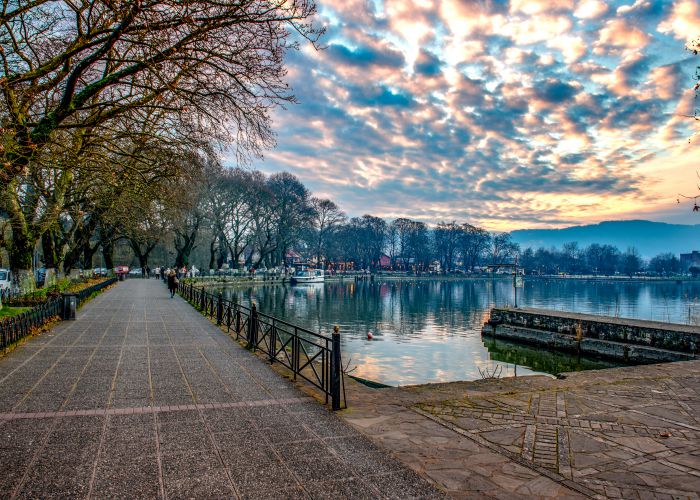
Ioannina - credits: Stratos Giannikos/Shutterstock.com
I might be a bit biased, as it is one of my absolute favorite winter destinations in Greece, but Ioannina is a place that doesn’t get nearly as much hype as it deserves. Located right in the heart of Epirus, about 455 km from Athens, it is breathtakingly beautiful.
With its out-of-this-world stone houses built on the shore of the striking Lake Pamvotida, Ioannina -or ‘Yiannena/Giannena’ as most locals call it- has a whimsical ambiance you can’t shake off.
It is almost poetic if this word can be used to describe a city. Ioannina is not only rich in beauty but also rich in history and culture, providing its visitors with an abundance of historical sights, museums, landmarks, and cultural events they can enjoy during their stay.
At the top of the list, I’d put the island of Kyra Frosini, one of the very few inhabited islands in the middle of a lake in the whole world, which has taken its name from a Geek socialite who was executed for adultery in Ioannina by Ali Pasha of Ioannina alongside 16 other women.
The island of Kyra Frosini used to be the home of Ali Pasha, the Ottoman Albanian ruler and now hosts its tomb and the Byzantine Museum of the city. The Ali Pasha Castle, the cave of Perama, the museum of Vrelli, the Archaeological Museum, and the Oracle of Dodoni are also must-visit attractions you shouldn’t leave out of your itinerary.
Due to the city being host to one of the largest and most significant Greek universities, Ioannina has a vibrant spirit and lively nightlife. Its numerous cozy cafes and traditional taverns full of Greek goodies will offer you a heavenly gastronomic experience. They will make you feel all warm and fuzzy inside, surrounded by friendly locals.
What’s more, if you’re a fan of jewelry, and especially silver, then count your Greek souvenirs sorted, as Ioannina has a long-standing tradition of silver and goldsmithing workshops that not only survives but continues to flourish to this day, having been established as one of the most considerable elements of local culture that have surpassed the Greek borders.
As a clear indication of the importance of the jewelry craftsmanship that the area is famous for, just note that the Greek expression ‘Arta and Yiannena’ that refers to the corresponding Greek regions and is still valid in modern Greek, means ‘all the riches of the earth and then some.’ Who can say ‘no’ to that?
Parga
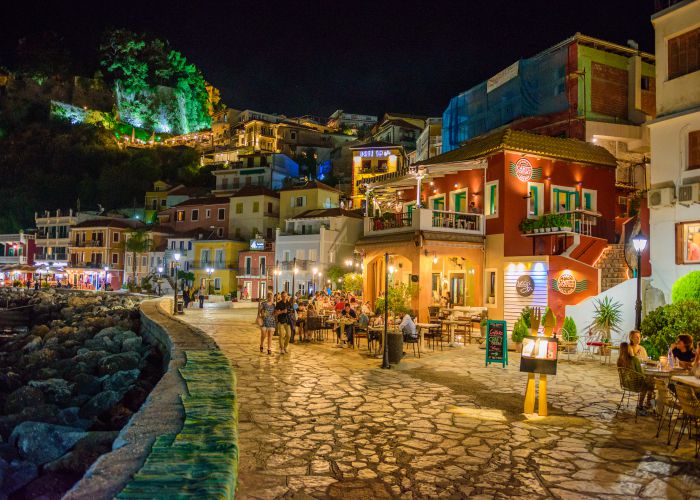
Parga - credits: Pit Stock/Shutterstock.com
At first glance, Parga, with its olive groves, fragrant orange trees, golden sand beaches, and deep blue sea, can trick you into thinking you’re on one of the most heavenly Greek islands; however, that’s not the case!
Located on the north-western coasts of Greece, Parga is an island-esque seaside town that combines the Greek island charm with the convenience of mainland transportation. With a prominent Venetian aesthetic and a calming vibe no one can resist, Parga is a hidden treasure even some of the locals have yet to explore.
Once you step foot in Parga, the first thing your eyes will come across is the charming, tiny islet that is decorated with a chapel on its peak on one side and the Venetian Castle on the hilltop above the town on the other.
In between lies the picturesque port with a number of taverns and cafes, luring you in for an authentic local experience. Look into the remains of the fortress, pay a visit to the castle of Ali Pasha on the hill, and mingle with the welcoming locals on the chat with friendly locals at the seaside taverns for a trip you’ll never forget!
The history of Parga goes back to Byzantine times, and it used to be one of the most significant cities of Epirus. Following the Norman, Venetian, Turkish, French, and English rule, Parga joined the modern Greek state in 1913.
What’s more, apart from the rich culture and history of the region, if you visit Parga in the summertime, don’t forget to treat yourself to a dive in its glorious beaches, which are surprising both in number and quality and can be found either in the village, within walking distance, or a little further out of the town, accessible by car.
With the glory of the Ionian sea as their common ground, each beach of Parga is unique and beautiful in its own way.
Some of my personal favorites are the organized beach of Valtos, looking out to the back of Vlacherna Monastery and Anthousa Castle and hosts a number of exciting water sports, the beach of Ai Giannakis, which offers the best scenery, and the beach of Agios Sostis, which may not be organized, but is the most secluded, offering a raw and untouched natural setting.
Other beaches that are worth your time include -but are not limited to- Kryoneri, Lichnos, Sarakiniko, Epano Molos, Plakero, Gragopidima, and Beretiniko.
The striking natural setting, cobbled alleys full of souvenir shops, extensive history, sophisticated culture, and the refreshing Ionian Sea make Parga an enchanting destination all visitors can’t help but fall in love with!
Monemvasia
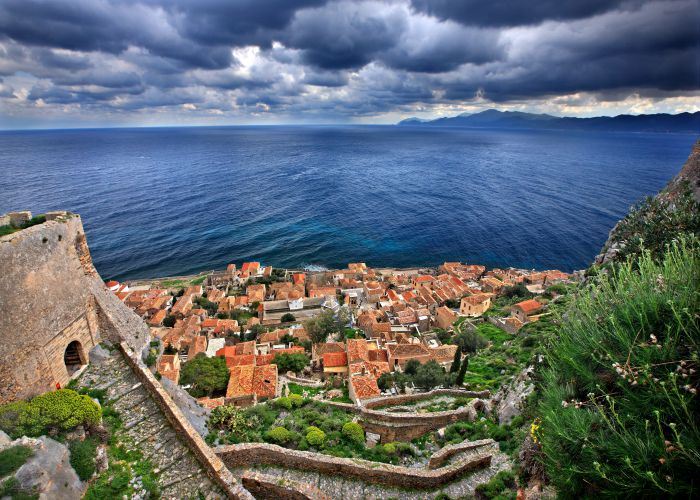
Monemvasia - credits: Heracles Kritikos/Shutterstock.com
No Greek off-the-beaten-path list would be complete without the addition of the alluring Monemvasia, the narrow promontory on the coast of Southeast Laconia in the Peloponnese, which used to be a peninsula in antiquity.
Its name means ‘the single entrance’ due to the small embankment that connects it to the Greek mainland, a feature that came in handy during the medieval times when Monemvasia was so difficult to access that it became infamous for being the hardest to conquer fort in Greece.
Despite having dropped this advantage long ago, Monemvasia, although neglected by the common visitor, is one of the most aesthetically pleasing and lusciously vegetated regions in Greece, full of breathtaking beaches and local treasures.
The whole region gives off a magical, peaceful vibe you are sure to catch as soon as you arrive, which will follow you throughout the trip, enveloping you in an unmatched sense of relaxation, especially if you visit it during the off-season months.
Monemvasia was allegedly the place where a few noble Spartans fled along with their families; the trace of these families continued to appear thousands of years later.
In the 15th century, Monemvasia reached its peak, hosting around 30.000 inhabitants and producing an indigenous wine called ‘Malvazia’ that became popular across the world.
After the Turkish and then the Venetian invasion, the popularity of the region started to decline, and it is now counting close to zero permanent occupants.
While in Monemvasia, enjoy the sea, the beautiful stone houses, the churches, and the striking views. Visit the square of Panagia Chrysafitissa and stand in awe before the house where Ritsos, one of the greatest Greek poets, was born and raised.
First and foremost, however, don’t forget to unwind and indulge in some pointless wandering across the arresting streets of the town, the ultimate gift this place can offer you.
Karpathos
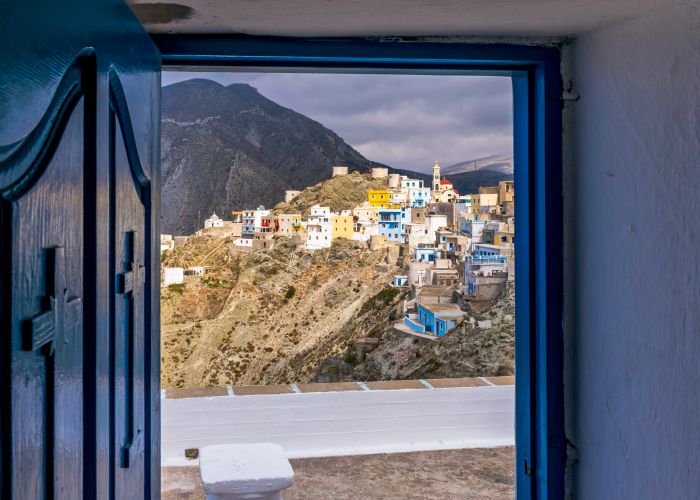
Olympos, Karpathos - credits: Anyarnia Shutterstock.com
Often referred to as ‘the island of contrasts' due to its impressive natural and cultural diversity, Karpathos, the second-largest island in the Dodecanese island complex, located between the popular islands of Rhodes and Crete, has no equal in beauty despite having yet to be discovered by Greece’s visitors.
Like most -if not all- Greek destinations, the island has a vast history that can be witnessed in the ancient ruins one can admire all across the land; the ancient acropolis and old stone churches are only a few of Karpathos’ treasures that are waiting for you to uncover them.
The landscape of the island is simply to die for. From imposing, steep cliff tops to traditional picture-perfect villages and dream golden beaches, Karpathos is a people-pleaser all around while keeping intact the authentic, old-time Greek core elements the Greeks boast about; age-old traditions, warm hospitality, musical skills passed down through a number of generations, and an endless appetite for celebration!
According to legend, the first inhabitants of Karpathos loved it so much that they climbed all the way to Mount Olympus to abduct the Greek gods and bring them to the island. For that reason, the inhabitants became known as ‘arpatheoi,’ which translates in Greek to ‘those who abducted the gods’ that later became ‘karpatheoi’ and eventually ‘karpathioi,’ which resulted in the name of the island.
Explore the ancient tales of the island b climbing to the Minoan Acropolis, continuing to Panagia Larniotissa, where a striking view of the whole island and the sparkling Aegean Sea stretches before you.
The allure of the island is not restricted to its past. As you approach Karparthos’ port en route to Pigadia, you’ll come across a number of cozy cafes and taverns you can visit for a hot beverage or a classic Karpathian delicacy.
Karpathos’ cuisine is another asset of the island, serving a variety of dishes -from fish to goat and everything in between- while its signature meal consists of homemade pasta with onion sauce, butter, and local cheese. Yum.
If you want to dig into the more traditional aspect of the island, the villages of Karpathos are the way to go. Olympus is Karpathos’ best-known, and for good reason; sat on top of a mountain, it offers a stunning panoramic view, while its inhabitants maintain an array of customs and traditions no visitor should overlook, not to mention the 70 stacked windmills that offer the most scenic backdrop or the spellbinding aromas coming off of the traditional wood ovens the village is full of.
If you’re a lover of nature, you should also pay a visit to North Karpathos, where protected species, including frogs, salamanders, and seals, are being protected.
Additionally, if you’re up for a hike, you’ll be glad to know that Karpathos has a trail network that exceeds 200 km, while you also have the opportunity to enjoy the most exciting sports, from mountain bike to scuba diving, windsurfing, and kitesurfing.
Last but not least, I should mention some of the 100 (!) magnificent beaches on the island that make the visitors’ jaw drop every year. Apella, Diakoftis, Agios Minas, Nati, Forokli, and Agios Nikolaos Arkassas are my top picks, while Mesochori, Lefkos, Achata, and Kyra Panagia, are also solid alternatives.
And as if all that wasn’t enough, keep in mind that Karpathos was included in Forbes’ list of ‘cheapest destinations worldwide for 2018’. Karpathos is not just another Greek island; it is an experience you should seek to gain a deeper understanding of Greece and its people!
Final Thoughts
So yes, Greece has an endless supply of superb places to visit - most of which remain shielded from mass tourism. After all, it is no coincidence most of its locals haven’t even seen half of it!
I highly suggest you experience this much quieter and more scenic side of Greece, especially if you’re visiting during the high-season months when the popular destinations flood with people from all over the world.
However, if you want to take a more conventional route, this is also absolutely fine; Greece will take your breath away no matter where you go, and at the end of the day, staples are staples for a reason. Time to read our Greece travel guide and book your summer holidays, don't you think?
Planning your trip to Greece? Check out our Greece itineraries, get in touch with our travel specialists, and design your tailor-made vacation plan!
Frequently Asked Questions
What are some off-the-beaten-path destinations in Greece?
How do I get to these off-the-beaten-path places in Greece?
What activities and attractions can I find in these hidden gems of Greece?
Is it safe to visit less-visited places in Greece?
Are there accommodations and facilities in these remote areas?
